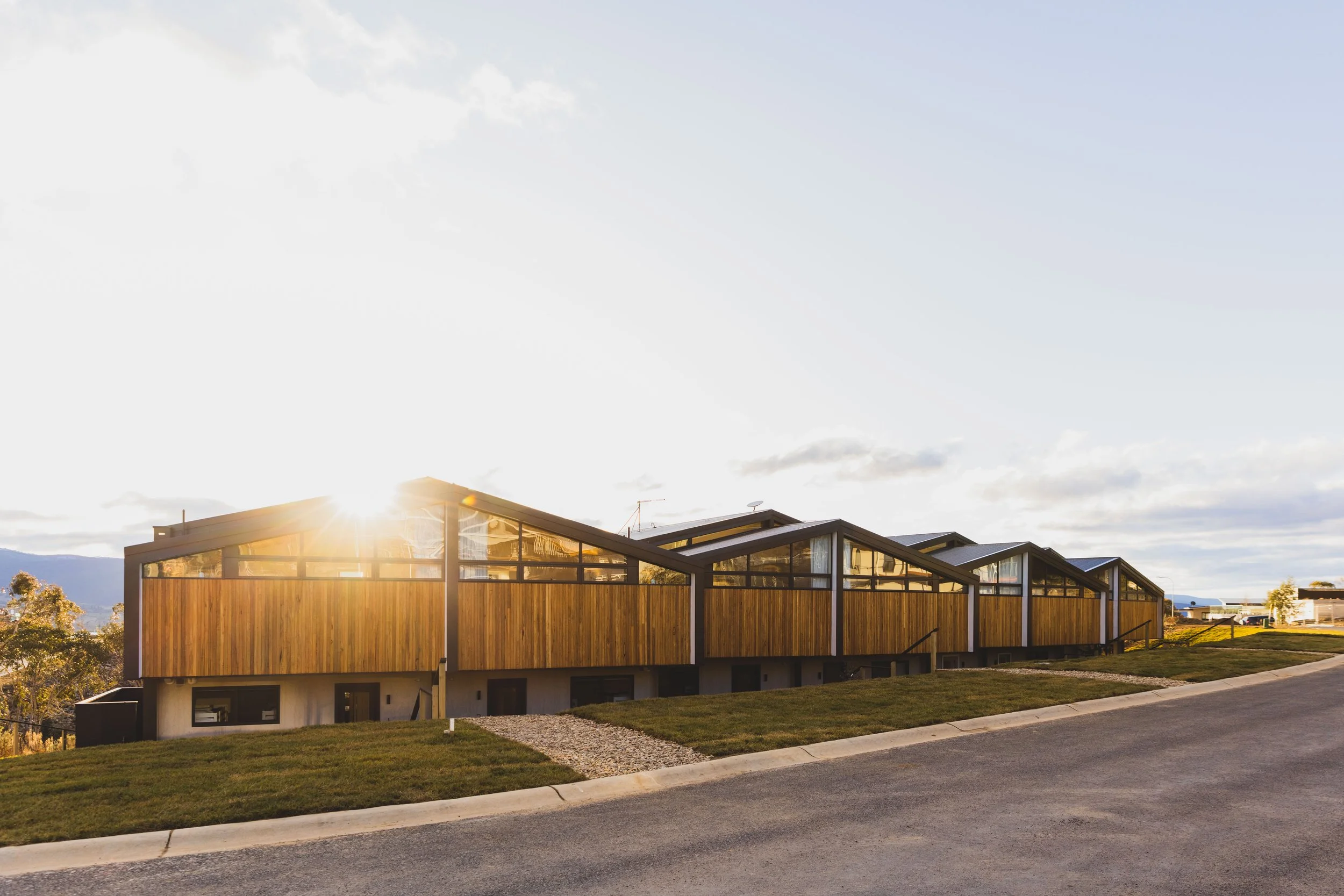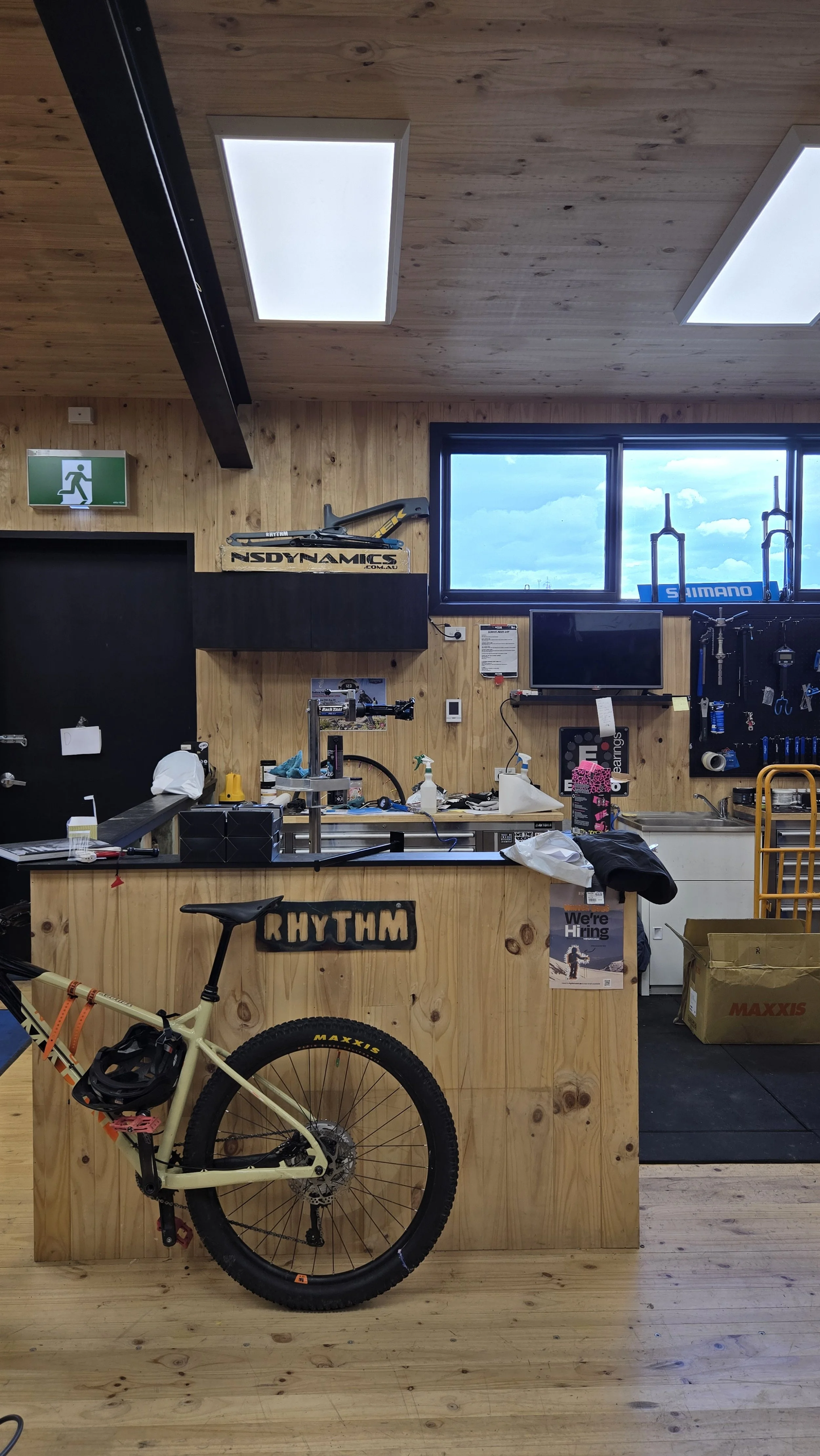Benefits of Mass Timber
Mountains by Lakeside’s major project partner, Brother Nature. Photography by Guy Williment.
Mass timber construction is revolutionising intelligent and sustainable building practices in Australia, offering a compelling alternative to traditional materials like concrete and steel.
At Jindabyne Lakeside, we are embracing this innovative approach to create eco-friendly, efficient, and aesthetically pleasing structures that harmonise with the natural beauty of the Snowy Mountains region.
What is mass timber?
Mass timber refers to a category of engineered wood products designed for structural applications. These include:
Cross-Laminated Timber (CLT): Layers of lumber boards stacked crosswise and bonded together, providing strength and stability.
Glue-Laminated Timber (Glulam): Multiple layers of timber bonded with durable, moisture-resistant adhesives, allowing for curved and long-span applications.
Laminated Veneer Lumber (LVL): Thin wood veneers bonded together, offering high strength and uniformity.
These materials enable the construction of buildings that are not only structurally sound but also environmentally responsible.
You can read more about mass timber here.
River by Lakeside’s major project partner, Brother Nature. Photography by Jascha Oakes.
Advantages of Mass Timber Design & Construction
1. Sustainability and Carbon Sequestration
Mass timber is engineered from a renewable resource, that sequesters carbon dioxide, reducing the overall carbon footprint of buildings. Unlike concrete and steel, which are energy-intensive to produce, timber stores carbon absorbed during tree growth. Much of this carbon is stored even after the timber is processed into the mass timber building product, and stored for the life of the building. This makes mass timber a key player in achieving net-zero emissions in the construction sector.
2. Energy Efficiency and Thermal Performance
Mass timber structures offer excellent thermal insulation, contributing to energy-efficient buildings. The airtightness achievable with mass timber construction minimises heat loss, making it ideal for Passive House designs. In regions like Jindabyne, where temperatures can vary significantly, this translates to reduced heating and cooling costs.
3. Fire Resistance
Contrary to common misconceptions, mass timber exhibits strong fire resistance. When exposed to fire, the outer layer chars and forms a protective barrier, slowing down combustion and maintaining structural integrity. This predictable performance under fire conditions enhances safety and compliance with building codes.
4. Speed and Efficiency of Construction
Prefabricated mass timber components allow for rapid on-site assembly, reducing construction time and labor costs. This efficiency is particularly beneficial in remote areas like the Snowy Mountains, where logistics can be challenging. Faster construction also means less disruption to the surrounding environment and communities.
5. Aesthetic Appeal and Biophilic Design
The natural warmth and beauty of exposed timber create inviting interior spaces that promote well-being. Biophilic design principles, which emphasize the connection between humans and nature, are inherently supported by mass timber construction. Occupants often report increased comfort and reduced stress levels in timber-rich environments.
6. Durability and Longevity
Engineered timber products are designed for durability, with natural resistance to pests and environmental wear. Properly maintained mass timber buildings can have lifespans comparable to or exceeding those of traditional structures, ensuring long-term value and performance.
7. Design Flexibility
Mass timber's versatility allows for innovative architectural designs, including long spans and curved forms. This flexibility enables architects and builders to create unique, functional spaces that meet diverse needs and preferences.
Mass timber in action at Rhythm Snowsports in Cooma.
Photo via Brother Nature.
Mass timber in action at Rhythm Snowsports in Cooma.
Photo via Brother Nature.
Mass Timber in Australia: A Growing Trend
Australia is witnessing a surge in the popularity of mass timber construction, with notable projects like Atlassian Central in Sydney and the C6 building in Perth leading the way. These developments showcase the potential of mass timber to transform urban landscapes while addressing environmental concerns.
In regional areas such as Jindabyne, mass timber is gaining traction for residential and commercial projects. The material's suitability for the local climate, combined with its sustainable attributes, makes it an ideal choice for building in harmony with the natural surroundings. The new Jindabyne library was designed and built using mass timber!
Jindabyne Lakeside's Commitment to Mass Timber
At Jindabyne Lakeside, we are dedicated to incorporating mass timber into our building practices. Our projects aim to:
Enhance Sustainability: By choosing mass timber, we reduce our environmental impact and contribute to a greener future.
Promote Energy Efficiency: Our designs prioritize thermal performance, ensuring comfortable living spaces year-round.
Celebrate Natural Beauty: We embrace the aesthetic qualities of timber to create warm, inviting environments that reflect the region's character.
Support Renewables Economies: Utilising mass timber supports the growth of sustainable forestry and manufacturing industries.
River by Lakeside’s major project partner, Brother Nature. Photography by Jascha Oakes.
Conclusion
Mass timber construction represents a significant advancement in sustainable building, offering a multitude of benefits from environmental stewardship to enhanced occupant well-being. As the industry evolves, embracing mass timber will be crucial in shaping a resilient and eco-conscious built environment.
At Jindabyne Lakeside, we are proud to be at the forefront of this movement, integrating mass timber into our projects to create structures that are not only functional and beautiful but also aligned with our commitment to sustainability and community well-being.
For more information on our mass timber initiatives and projects, please visit our Philosophy page.





